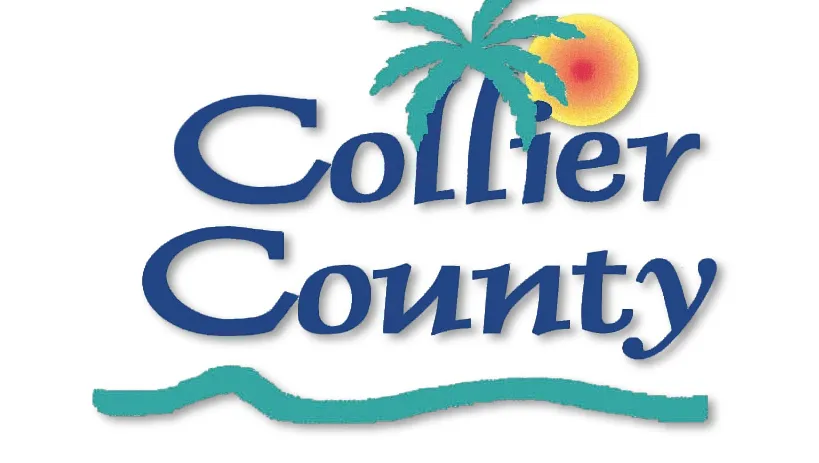Residents of Golden Gate fight 24-bed recovery residence

David Lawrence Centers is back in the news with a project that hundreds of neighbors claim will endanger children and the elderly.
The nonprofit mental health and substance addiction treatment organization seeks to develop a 24-bed rehabilitation residence on 62nd Street Southwest, south of Golden Gate Parkway. The location is located on the north side of the parkway, close to the main David Lawrence campus.
The 24-bed facility, to be known as Hope Home II, is adjacent to David Lawrence’s existing six-bed recovery home, Hope Home, according to a recent article by Liz Freeman of Naples Daily News.
A rezoning application to create an institutional subdivision for both residences on a 4.5-acre plot was slated for September 20 before the Collier County Planning Commission but was postponed indefinitely.
Leaders of the mental health clinic declined to clarify whether neighbors’ complaints were the key reason for their request for a continuance.
“(David Lawrence Centers) continues to move forward with our proposal to develop a second recovery residence in Golden Gate, located less than a mile away from our main campus,” CEO Scott Burgess said in a statement.
“Recently, we requested a continuance to ensure that we can present the strongest case possible while also providing the Collier County Planning Commission with ample time to review and discuss this critical community initiative,” he told reporters.
The proposed 24-bed residence pales in comparison to the 87-bed intake facility that will be built adjacent to the main David Lawrence campus on the north side of Golden Gate Parkway.
The Collier County Commission approved the larger structure, which was originally designed for 102 beds, in February 2023. It is a collaborative effort with the county to address the significant need for more mental health and substance abuse treatment beds.
Residents on the north side of the parkway lost a battle to keep the larger project out of the neighborhood; now, residents south of the parkway fear a similar fate with the 24-bed recovery residence.
The Collier Commission makes the final decision on modifying land use designations and rezonings.
David Lawrence, a charity, is Collier’s primary treatment provider for addiction and mental health problems, with a strong donor base. According to its annual financial report, it would provide 340,000 treatment services in 2023 through more than 40 inpatient and outpatient programs.
The project’s status
Michael Rizzo, a psychologist and property owner near the latest building, said a 24-bed house for the most difficult population to treat is unheard of unless it is located on institutional campuses rather than in residential districts.
There will be no David Lawrence staff at the 24-bed complex. The idea calls for two senior citizens to provide oversight. One of the six beds at the existing Hope Home is for a senior.
“Forty-five to 60 men a year will rotate through the (facility),” he said. “All it takes is for one to go off the rails.”
Neighbors have been waiting since early July 2023, when David Lawrence officials sent letters on the project. A community information meeting was conducted on August 9. About two dozen property owners gathered.
Since then, a petition with 52 signatures of opposition has been presented to the county, and a website, safecollier.com, has been created to rally support.
The continued hearing before the planning commission implies additional uncertainty, according to Rizzo, the group’s de facto spokesman.
“It leaves the neighbors very much on edge,” he told reporters.
What’s at stake
David Lawrence has designed landscape boundaries and fences around the proposed 24-bedroom home.
During the neighborhood meeting, an alternative to walls was explored. According to the staff presentation, the closest dwelling is 450 feet away.
Rizzo stated that buffers or barriers will not prevent recovery individuals who may relapse or experience a mental health event from strolling around the neighborhood where children live or to a school bus stop in the region. At least one known resident is a widow living alone.
The community has obtained statistics from the Collier County Sheriff’s Office indicating that 14 calls for officers were made to the current six-bed residence during the last 20 months, he stated.
The tenants of the planned 24-bed dwelling would be subject to the same laws as the present six-bed house, which prohibits the use of alcohol or other substances. The David Lawrence proposal calls for a curfew and labor restrictions.
According to Rizzo, a 24-bed recovery residence deviates from the concept of a sober home and is more similar to a recovery dormitory. Cameras and rules are insufficient protection against an at-risk transitory population.
In a nine-page letter to the planning board, he highlighted psychology and addiction treatment studies on recovery recidivism and opiate addiction. For example, the American Medical Association reports that 53% of drug users have at least one co-occurring psychiatric condition, such as schizophrenia or bipolar disorder.
According to research, six to ten people are the most effective size for a sober house to imitate a family-like support network, he added.
“Simply put, this proposed neighborhood dormitory for 30 men is a poorly thought out idea designed with perhaps good intentions of faithful donors and state officials to address the mental health and opiate addition problem,” according to a letter he wrote to the planning commission. “Certainly there is a more appropriate location for this experimental facility.”
As an alternative to a 24-bed house, he stated that the neighborhood “may not be opposed” to a second sober home, as long as it allows for more permanent residency rather than temporary lodging.
What does the mental health centre say?
According to David Lawrence’s concept, recovery houses are commonly employed to provide a healthy living environment for those in recovery.
“Thousands of recovery residences exist in the United States, varying in size, organization, and target population,” according to the center’s plan.
The mental health facility states that, the current Hope Home is a level 2 recovery residence in accordance with the Florida Association of Recovery Residences, FARR, with monitoring and resident-specific policies.
In its presentation at the community gathering last year, the facility stated that there have been no drug charges or crisis stabilization admissions among the initial Hope Home residents throughout their time there.
Residents must commit to at least a 90-day stay, follow a rehabilitation plan, and collaborate with a mentor.
All potential residents are subjected to background checks to ensure that they have no history of violence and are not sexual predators.
Burgess, CEO of David Lawrence, stated in his statement that the facility is dedicated to provide lifesaving and life-changing care to people seeking help for substance use disorders.
“We understand the pressing need for this recovery residence in Collier County and look forward to presenting it before the planning commission at a future date,” according to him.
This article originally appeared on Naples Daily News
